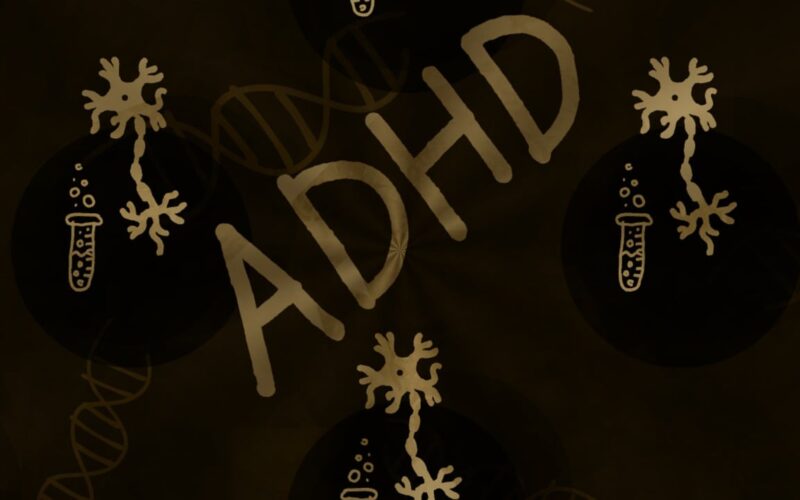Attention Deficit Disorder (ADD) and Attention Deficit Hyperactivity Disorder (ADHD) affect millions of people worldwide, yet many misconceptions still exist about these conditions.
Understanding ADHD as a highly genetic, brain-based syndrome that affects specific brain functions and related behaviors can help reduce stigma and improve support for those affected.
While many associate ADHD primarily with children who can’t sit still, the reality is far more nuanced and extends well into adulthood.
These conditions impact people differently across age groups, with adults often experiencing difficulties at work and in relationships.
The following facts will shed light on what ADHD truly is, how it manifests, and why traditional perceptions only scratch the surface of this complex condition.
1. ADHD stands for Attention-Deficit/Hyperactivity Disorder, a neurodevelopmental condition affecting brain development
ADHD, or Attention-Deficit/Hyperactivity Disorder, is a neurodevelopmental disorder that affects how your brain develops and functions.
This means the condition begins during your brain’s development and can impact how you think, focus, and behave.
When you have ADHD, your brain structure and function differ from those without the condition.
These differences aren’t a result of poor parenting or diet—they’re biological in nature.
ADHD is one of the most common mental disorders affecting children, though it often continues into adulthood.
The condition isn’t something you “grow out of,” but rather a lifelong neurological difference that you can learn to manage effectively.
Your brain with ADHD may process information differently, particularly in areas responsible for attention, impulse control, and executive functioning.
This is why you might struggle with staying focused, organizing tasks, or controlling impulses.
Understanding ADHD as a neurodevelopmental condition helps reduce stigma and emphasizes that it’s not a character flaw or lack of discipline.
With proper support and treatment, you can thrive despite these neurological differences.
2. ADD is an outdated term now included under the ADHD diagnosis, specifically referring to the inattentive type.
If you’ve heard both ADD and ADHD used interchangeably, there’s a reason for this confusion. ADD, or attention-deficit disorder, is an old term that is no longer used by mental health professionals for diagnostic purposes.
The terminology changed when experts recognized that attention difficulties can present with or without hyperactivity. Today, what was once called ADD is now diagnosed as ADHD, Predominantly Inattentive Type.
You might still hear people using the term ADD in casual conversation, but it has been officially replaced in medical and clinical settings. This change happened in the 1994 update to the Diagnostic and Statistical Manual of Mental Disorders.
People with the inattentive type of ADHD typically struggle with focus, attention to detail, and organization, but don’t display the hyperactive-impulsive symptoms often associated with ADHD. This can sometimes lead to delayed diagnosis, especially in girls and women.
Understanding that ADD is now part of the ADHD spectrum helps healthcare providers better classify symptoms and develop appropriate treatment plans for your specific needs.
3. ADHD symptoms typically begin before age 12 and can continue into adulthood
Research consistently shows that ADHD symptoms must begin in childhood before age 12 to meet diagnostic criteria. This early onset is a key factor that healthcare providers look for when evaluating potential ADHD.
While many people associate ADHD with childhood behaviors, you should know that these symptoms often continue into the teen years and adulthood. The way symptoms present, however, may change as you age.
For children, common signs include fidgeting, difficulty staying seated, and problems focusing on schoolwork. You might notice your child struggles with waiting their turn or frequently interrupts others.
In adults, ADHD may look different than it does in children. You might experience more internal symptoms like restlessness, difficulty organizing tasks, or problems maintaining focus during meetings or conversations.
The persistence of symptoms doesn’t mean ADHD can’t be managed effectively. With proper diagnosis and treatment, you can learn strategies to work with your ADHD at any age.
4. There are three types of ADHD: predominantly inattentive, predominantly hyperactive-impulsive, and combined type
ADHD manifests differently in each person, and these differences are categorized into three distinct types. Understanding which type you or your loved one has can help in developing more effective management strategies.
The predominantly inattentive presentation (sometimes still called ADD) is characterized by difficulty maintaining focus, following instructions, and organizing tasks. You might find yourself frequently losing items, appearing forgetful, or struggling to complete activities that require sustained mental effort.
With predominantly hyperactive-impulsive ADHD, you’ll notice more fidgeting, excessive talking, and difficulty waiting your turn. Children with this type often seem to be “on the go” constantly and may interrupt conversations or activities without thinking.
The combined type is the most common presentation and includes symptoms from both categories. If you have this type, you experience both the inattention issues and the hyperactivity-impulsivity challenges, making daily functioning particularly complicated.
Your symptoms may change over time, and your ADHD type might evolve as you grow and develop new coping mechanisms.
5. Common symptoms of inattentive ADHD include distractibility, poor memory, and difficulty sustaining attention
People with inattentive ADHD often struggle with maintaining focus on tasks, especially those requiring sustained mental effort. You might find yourself easily distracted by external stimuli or even your own thoughts, making it challenging to complete work or school assignments.
Forgetfulness is another hallmark symptom. You may regularly misplace important items like keys, phones, or wallets, and struggle with remembering appointments or deadlines despite your best intentions.
Many with inattentive ADHD report difficulty following through on instructions and completing tasks. You might start projects with enthusiasm but leave them unfinished as your attention shifts elsewhere.
Organizational challenges frequently accompany this condition. You may find your workspace cluttered, struggle with time management, or have trouble prioritizing tasks effectively.
Daily activities requiring attention to detail can present significant hurdles. You might make careless mistakes in schoolwork, skip important steps in tasks, or miss details in instructions that others readily notice.
These symptoms can often be mistaken for anxiety or mood disorders in adults, making proper diagnosis important for receiving appropriate treatment.
6. Hyperactive-impulsive symptoms include excessive fidgeting, restlessness, and impulsive decisions
Hyperactive-impulsive symptoms are key diagnostic features of ADHD. People with predominantly hyperactive-impulsive ADHD often display fidgeting or squirming, making it difficult for them to remain seated for extended periods.
You may notice excessive and inappropriate running or climbing in children with this type of ADHD. Adults might experience this as a persistent feeling of restlessness or being unable to relax. Talking excessively is another common sign that you or your loved one might display.
Impulsivity manifests as interrupting others during conversations, blurting out answers before questions are completed, or making hasty decisions without considering consequences. These symptoms typically begin before age 12 and can significantly impact daily functioning.
If you recognize these signs in yourself or someone you care about, it’s important to know that effective treatments exist. Medications and therapeutic approaches can help manage these hyperactive-impulsive symptoms and improve quality of life.
7. ADHD is more commonly diagnosed in males than females, though it affects both genders
Statistics consistently show that boys are more likely to be diagnosed with ADHD than girls, with some studies indicating boys receive diagnoses at nearly twice the rate of girls. According to CDC data, approximately 15% of boys receive an ADHD diagnosis compared to 8% of girls.
This diagnostic disparity doesn’t necessarily mean ADHD is more prevalent in males. Rather, it often reflects referral bias and differences in how symptoms present between genders. You might notice that boys typically display more obvious hyperactive behaviors that attract attention from parents and teachers.
Girls with ADHD frequently exhibit more inattentive symptoms that may be overlooked in classroom settings. They might appear daydreamy or disorganized rather than disruptive, leading to consistent underidentification.
Interestingly, the gender gap appears to narrow in adulthood. Research suggests the gender ratio in adult ADHD is about 1.6 males for every female, smaller than what’s observed in childhood diagnoses.
If you suspect you or your child might have ADHD, regardless of gender, seeking professional evaluation is important for proper diagnosis and treatment.
8. Approximately 2.5% of adults worldwide have ADHD, indicating it often persists beyond childhood.
ADHD is not just a childhood condition as was once commonly believed. According to the American Psychiatric Association, approximately 2.5% of adults have ADHD across most cultures.
Some research suggests the prevalence may be even higher. A 2020 study found that the prevalence of persistent adult ADHD was 2.58%, while symptomatic adult ADHD affected about 6.76% of adults globally, equivalent to nearly 140 million people worldwide.
The Attention Deficit Disorder Association reports that around 2.8% of adults worldwide have ADHD, showing slight variations in prevalence estimates across different studies. These statistics confirm that ADHD frequently continues into adulthood.
When you were diagnosed with ADHD as a child, you have about a 60-70% chance of continuing to experience symptoms as an adult. Your symptoms may change over time, with hyperactivity often becoming less obvious while challenges with organization, time management, and impulsivity may persist.
Most adults with ADHD can manage their symptoms effectively with proper treatment. This typically includes medication, psychotherapy, or a combination of both approaches.
9. Children with ADHD may struggle with daily routines and organization but can excel with proper support
Children with ADHD often find it challenging to establish and maintain daily routines. They may struggle with time management, following multi-step instructions, and completing routine tasks that require sustained attention.
Creating effective daily structures can significantly improve behavior and focus for children with ADHD. When you implement consistent routines, you provide the external structure that helps compensate for executive functioning challenges.
You might notice your child has difficulty sitting through meetings or activities, managing multiple projects, or dealing with routine tasks. These daily routine challenges are common ADHD symptoms, not signs of laziness or lack of intelligence.
Structure and routines help promote focus and reduce stress for children with ADHD. When you create predictable patterns, you’re helping your child understand what to expect and how to prepare mentally for transitions.
Following basic routine-building rules can transform daily challenges into opportunities for growth. Visual schedules, timers, and breaking tasks into smaller steps can help your child develop organizational skills that will benefit them throughout life.
10. Anxiety and fear can co-occur with ADHD, affecting emotional regulation
ADHD and anxiety share a significant connection, with up to 50% of people with ADHD experiencing anxiety at some point in their lives. This co-occurrence isn’t just coincidental—the two conditions can interact and intensify each other’s symptoms.
When you have ADHD, you may find it harder to regulate emotions because the function and structure of your brain differ from those without ADHD. This neurological difference affects how you process and respond to emotional stimuli.
Anxiety can further complicate your ADHD experience by lowering neural activity in brain regions responsible for information gating during cognitive tasks. This means when you’re anxious, your ability to filter irrelevant information may become even more compromised.
You might notice that ADHD amplifies emotional experiences—from angry outbursts to flashes of anxiety. These intense feelings can feel overwhelming at times, making everyday stressors seem much more significant.
Understanding the link between ADHD and anxiety is crucial for developing effective coping strategies. With proper support and treatment approaches that address both conditions, you can learn to manage these challenging emotional experiences.








